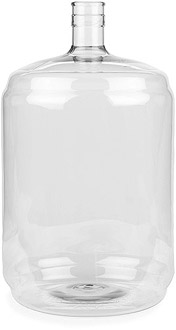 Hello,
Hello,
I’ve heard that plastic carboys can allow oxygen into the carboy during wine brewing or aging. Do you have any knowledge regarding this?
Thank you for your help.
Sonia L.
———-
Dear Sonia,
All the plastic carboys we have seen are perfectly fine for fermenting wine. It’s all about the plastic being used.
In the case of the 5 gallon plastic water bottles, like you see at the grocery store, they are made of food-grade plastic, similar to that used to make milk jugs. Then saran is blown-in to layer the inside as an oxygen barrier.
We sell plastic carboys in various sizes that are made of PET. This is an oxygen-barrier plastic… the same plastic used to make 2 liter soda pop bottles, only these fermenters are much thicker than a 2 liter. It is virtually impossible for oxygen to pass through them.
Happy Wine Making,
Customer Service
———————————————————————————————————
Ed Kraus is a 3rd generation home brewer/winemaker and has been an owner of E. C. Kraus since 1999. He has been helping individuals make better wine and beer for over 25 years.
What's That Stuff In My Wine?
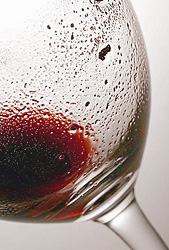 Greetings,
Greetings,
We have been into wine brewing for a few years now but seem to have the same problem every year. Our homemade wine instructions say to let the wine sit for about a year before we bottle it. It is beautifully clear and wonderful tasting. It is a medium sweet grape wine. We get our juice from a local winery. Our problem is when the wine is chilled it gets what I would call residual sugar in it. We have to use a topper with a filter on it to enjoy the wine. Would like to know if you have any opinions on why the wine does this and how we can prevent it.
Thank you
Barbara and Danny
———-
Dear Barbara and Danny,
What you are seeing at the bottom of the wine bottles is not sugar. It is tartaric acid crystals. Tartaric acid is one of many acids found naturally in fruits. Tartaric is the primary fruit acid in grapes.
Essentially, what is happening is your wine has more tartaric acid than it can hold. As the wine gets colder, its capacity for tartaric acid even becomes less. The excess tartaric acid that can’t remain solvent is deposited as little crystals, just like those you are seeing.
This is a fairly common problem when making wine from fresh grapes. It is mentioned in the book, First Steps In Winemaking. You can also read the article, Maintaining Temperature Stability In Your Wines, that is on our website. It will show you how to deal with this issue and how to prevent it in the future.
Best Wishes,
Customer Service at E. C. Kraus
———————————————————————————————————
Ed Kraus is a 3rd generation home brewer/winemaker and has been an owner of E. C. Kraus since 1999. He has been helping individuals make better wine and beer for over 25 years.
Can I Motorize Your Manual Grape Destemmer?
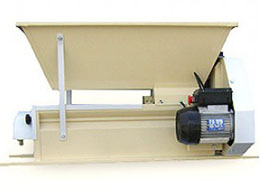 One of the questions we get asked from time to time is can the manual grape destemmer/crusher we offer be motorized? The short answer to this question is of course you can. All you need to do is to rig a pulley onto the crank shaft and attach an electric motor with a belt. Straight forward. We’ve actually had a couple of customers do this.
One of the questions we get asked from time to time is can the manual grape destemmer/crusher we offer be motorized? The short answer to this question is of course you can. All you need to do is to rig a pulley onto the crank shaft and attach an electric motor with a belt. Straight forward. We’ve actually had a couple of customers do this.
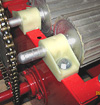 While you can motorize the grape destemmer/crusher with a little ingenuity, the fact of the matter is that you have to do so with a little caution. The main issue are the bushings. These are the parts that hold the turning shafts into place. On this unit the bushings are made of a hard, heavy nylon. The shafts spin in a hole through the nylon. This is completely adequate for hand-cranking and slow motorization, but what you don’t want to do is motorize this unit to go any faster than necessary. High speeds will unnecessarily over heat and wear down these bushings.
While you can motorize the grape destemmer/crusher with a little ingenuity, the fact of the matter is that you have to do so with a little caution. The main issue are the bushings. These are the parts that hold the turning shafts into place. On this unit the bushings are made of a hard, heavy nylon. The shafts spin in a hole through the nylon. This is completely adequate for hand-cranking and slow motorization, but what you don’t want to do is motorize this unit to go any faster than necessary. High speeds will unnecessarily over heat and wear down these bushings.
I’d also like to add a little perspective to this issue. This manual grape destemmer/crusher is rated at 2,000 pounds an hour. This means that in just one hour you can crush and destem enough grapes to make about 125 gallons of wine. That’s with normal, everyday, human-powered hand-cranking. So gearing the motorized speed to match that of a human would be more than sufficient.
With all that being said, I think it’s pretty clear that the manual grape destemmer/crush is an extremely useful piece of wine making equipment, with or without a motor. It’s also at a tremendous price right now, at least while our current inventory lasts, and shipping is free.-
Ed Kraus is a 3rd generation home brewer/winemaker and has been an owner of E. C. Kraus since 1999. He has been helping individuals make better wine and beer for over 25 years.
Are You Ready For When The Fruits Are Ready?
 Now’s the time to start getting your wine making materials together. The fruits are beginning to coming in, and there’s nothing worse than having a windfall of free fruit come your way only to discover you’re not ready!
Now’s the time to start getting your wine making materials together. The fruits are beginning to coming in, and there’s nothing worse than having a windfall of free fruit come your way only to discover you’re not ready!
One way to be ready is by having one of our Wooden Fruit Crushers on hand. We introduced the Wooden Fruit Crusher for the first time last year, and the positive feedback has been tremendous. This is a small unit that works beautifully for someone making small batches–from 5 to 50 gallons.
One of the great things about it is that it’s just as good of a grape crusher as it is a blackberry crusher, strawberry crusher, or whatever crusher. It has been designed in such a way that it can handle all types of fruits regardless of size. No adjustments are needed. Just fill the hopper and start cranking. It can handle about 80 to 100 pounds of fruit an hour with relative ease. Even apples are nothing but a small challenge.
If you’ve been considering buying a grape crusher, but have been put off by their large size and large prices, the Wooden Fruit Crusher may be right for you. It’s a smaller unit, designed to handle berries of all sizes–designed with the home wine maker in mind.
———————————————————————————————————
Ed Kraus is a 3rd generation home brewer/winemaker and has been an owner of E. C. Kraus since 1999. He has been helping individuals make better wine and beer for over 25 years.https://homebrewing.org/collections/fruit-presses-and-crushers
Home Wine Making… The Perfect Hobby!
 Bringing a bottle of wine to a party is one thing, but bringing a bottle of wine you made yourself is a whole ‘nother matter.
Bringing a bottle of wine to a party is one thing, but bringing a bottle of wine you made yourself is a whole ‘nother matter.
One of the greatest things about making your own wine is it gives you an opportunity to share something you’ve made with your family and friends. This alone makes home wine making is a very rewarding pastime. Add to that the fun you’ll have while making it and drinking it, and you got yourself the perfect hobby.
A personalized wine gift such as a homemade bottle wine makes an astounding gift, one that stands out. You can put your own custom wine bottle labels on it, use decorative sleeves over the neck of the bottle and give your wine that professional winery look.
Such a personalized wine gift is appropriate in so many ways: birthdays, weddings, reunions, homecomings, even anniversaries. It makes a great way to celebrate and commemorate the event, and you’ll get to share something you made with your own hands.
Get started today! We have three different wine making starter kits to choose from. Each of them assume you know nothing about making wine, and you’ll discover that its easier than you think.
———————————————————————————————————
Ed Kraus is a 3rd generation home brewer/winemaker and has been an owner of E. C. Kraus since 1999. He has been helping individuals make better wine and beer for over 25 years.
See-Through Lid Make Our Steam Juicer Convenient To Use
 One of the features that makes the our Steam Juicer so convenient to use is its glass lid. Having a lid you can see though allows you to see the produce being steamed without interrupting the progress. With other Steam Juicers you have to lift the lid to see what’s going on, and there goes all you steam rolling out into the kitchen.
One of the features that makes the our Steam Juicer so convenient to use is its glass lid. Having a lid you can see though allows you to see the produce being steamed without interrupting the progress. With other Steam Juicers you have to lift the lid to see what’s going on, and there goes all you steam rolling out into the kitchen.
The lid is made of heavy-tempered glass, so breakage is not inevitable like it is with regular glass, and it has a nice stainless-steel ridge around the edge, so chipping is next to impossible. The stainless-steel handle is solid too and adds a nice touch.
I was asked once, what good is a glass lid if it’s steamed up all the time? You can see nothin’ anyway. That’s actually not true. Yes, the lid will steam up when it is first put on the Steam Juicer, but once the glass’s temperature equalizes with the steam, you can see just fine. The only thing obstructing your view is drops of water hanging from inside the lid.
Now’s a great time to purchase yours–right before the heavy fruit season arrives. And, it’s also one of the nicer wine making gifts you can buy for anyone who’s into making fruit wines.
———————————————————————————————————
Ed Kraus is a 3rd generation home brewer/winemaker and has been an owner of E. C. Kraus since 1999. He has been helping individuals make better wine and beer for over 25 years.
What Size Corks Should I Buy?
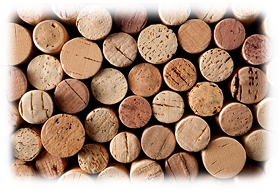 Hi,
Hi,
I ordered a starter kit and some other cool stuff from you, and will be ready to bottle my first batch of wine soon. I would rather use regular corks instead of the plastic top corks in the kit. I have a hodge podge of scavenged wine bottles to use in the 750ml range (or what ever the regular wine bottle is). What size corks would you recommend for this? I didn’t know there were so many different sizes to choose from, and what are the different lengths for?
Thanks,
Paul K.
———-
Dear Paul,
I understand you not wanting to use the Mushroom Corks that are included in the starter kit, particularly if you are planning on giving some of the bottles out as personalized wine gifts. Having a said this, please understand that the Mushroom Corks will seal the wine bottles very well and are appropriate for storing and aging wines for a period of about 12 to 24 months.
To answer your questions, if your wine bottles are standard 750ml and they have a cork finish opening –not screw cap– then the opening should be 3/4 inch. Wineries use a size number 9 cork for this size opening. The 9 refers to the diameter of the cork.
This size cork can not be put in by hand. It is much fatter than the opening of the wine bottle. You’ll have to get a piece of homemade wine equipment called a corker or cork inserter. The corker compresses the cork stopper, then plunges it into the bottle’s opening.
When you buy corks not only do you have a choice of diameter, but you also have a choice of length and grade (density). You may be asking yourself, what’s the difference? The difference is in how much the cork breaths or allows air to permeate through or past it. Longer corks allow less air into the bottle than short corks; dense corks allow less air into the bottle then not-so-dense corks.
Wine needs air to age properly, but too much and the life of the bottle will become to short. Too little air and the wine takes too long to reach its aging potential. In short, you should buy corks that will match the rate of your consumption.
Having said all of this, most people buy either the #9 Superior Grade or the #9 Extra-First Grade (short). If you have a wine that you would like to age for many years, I would suggest getting the Synthetic Corks for the tightest seal.
Happy Wine Making,
Customer Service at E. C. Kraus
———————————————————————————————————
Ed Kraus is a 3rd generation home brewer/winemaker and has been an owner of E. C. Kraus since 1999. He has been helping individuals make better wine and beer for over 25 years.
Time To Bottle, But My Wine's Still Bubbling!
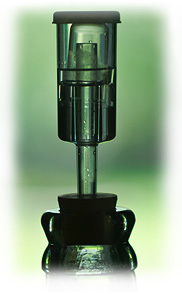 Hello Adventures in Homebrewing,
Hello Adventures in Homebrewing,
I have made wine from kits over 50 times with fantastic success! I have always followed the directions and SG measurements of my hydrometer. I was admiring a finished batch in one of the carboys, getting ready to filter and bottle. To my surprise I noticed the airlock bubble! I watched it and after 7 minutes it did it again. The highly polished finished wine had no bubbling in it or from the lees. Obviously there is some fermentation occurring. Should I rerack the wine into a new carboy and add sodium metabisulfite or what????
Thanks Rich G.
———-
Dear Rich G.,
Glad to hear you’re having such great success with all your wines. People can’t believe how great these wine kits are until they’ve actually tried them.
When it comes to making wine, a good mantra to follow is: When in doubt… wait. Assuming you have a good finishing reading on your gravity hydrometer, I would not do anything but wait some more before filtering and bottling. Just give it more time to make sure the fermentation is complete. You could add a standard dose of potassium or sodium metabisulfite to the wine, but I don’t think it is necessary.
In reality, the fermentation may actually be done even though you are still seeing some bubbling. It could simply be some trapped, leftover CO2 gas from the fermentation that hasn’t been able to release until now.
Temperature change can play a role in this kind of occurrence. If the wine is in glass jugs of sorts, as the temperature cools the glass contracts making the volume it can hold slightly less. The result is a pushing out of some head-space. This is not too noticeable with gallon glass carboys, but when you get to the larger sizes –5, 6 and 7 gallons– it is surprisingly noticeable.
A rise in temperature can also cause some bubbling as well. As a liquid becomes warmer it’s ability to hold CO2 gas become less and less. This is evident when opening a hot can of soda pop versus a cold can. The amount of CO2 gas the froths out is quite different in each instance.
In any event I would just wait it out if I were in your shoes. There’s really no hurry to get the wine into bottles, and realize that the wine is still aging even while it is in bulk.
Great to hear from you.
Customer Service at E. C. Kraus
———————————————————————————————————
Ed Kraus is a 3rd generation home brewer/winemaker and has been an owner of E. C. Kraus since 1999. He has been helping individuals make better wine and beer for over 25 years.
Are Plastic Fermenters Putting A Metallic Taste In My Wine?
 Hi,
Hi,
I am using 5 gal. plastic water bottles purchased new from Target as plastic fermenters. I have had several batches of wine (strawberry/symphony) and just strawberry with a “metallic” twang taste. I have racked off the sediment and was wondering if it was a plastic taste from the water bottles. I noticed that you and other companies do not carry plastic 5 gal “carboys”.
It is just my nature to try and pinch pennies whenever possible. I was just wondering if my penny pinching is hurting my wine making.
Thanks
Don C.
———-
Good Morning Don,
Using a plastic container for fermenting your wine is of no issue at all, just so long as the plastic is food-grade. I’m sure that the water carboys you purchased will work fine as plastic fermenters.
Also just to let you know, we have recently started to carry plastic carboys. We have 3 and 6 gallon sizes. These carboys are made from the same type of plastic used to make 2 liter soda pop bottles.
Going back to the metallic taste in your wine, this is normally caused by leaving the wine on the sediment for too long, particularly after the yeast have ran out of sugars to consume. The yeast will continue their ravaging consumption by eating the dead yeast cells that lay at the bottom. The metallic taste is actually the unique enzymes the yeast will produce to breakdown these dead cells. This is a process called autolysis.
To prevent this from happening in the future you should rack your wine in a timely fashion. Usually this means moving the wine off the sediment sometime around the 5th day of fermentation into a clean secondary fermentation, something like the plastic carboys discussed earlier.
The wine should be racked off the sediment again after the fermentation has completed, and than finely one more time right before bottling. If you plan on aging your wine in carboys before bottling, an additional racking may be necessary.
Happy Wine Making,
Customer Service at E. C. Kraus
———————————————————————————————————
Ed Kraus is a 3rd generation home brewer/winemaker and has been an owner of E. C. Kraus since 1999. He has been helping individuals make better wine and beer for over 25 years.
Is Your Steam Juicer Made Of Stainless Steel?
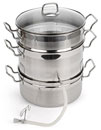 Hello,
Hello,
I was wondering if you could help me out. My plums are about ripe and i would like to use a steam juicer on them. I need to know if the one you show on your website is made of stainless-steel or is it an aluminum?
Gladys M.
———
Dear Gladys,
The steam juicer we offer is made of heavy-gauged, 18/10 stainless steel with the exception of the lid which is made of both stainless steel and highly tempered glass. The hose is made of high-grade silicone tubing, which will stand up very well to the temperatures involved with steam juicing.
We used to sell an aluminum one year ago, however we discovered that the collection pan tended to pit too easily from the acid in the juice. From time to time someone would leave residual juice in the pan overnight or whatever and the bottom would be all corroded and pitted when they’d go to clean it.
Best Wishes,
Customer Service at E. C. Kraus
———————————————————————————————————
Ed Kraus is a 3rd generation home brewer/winemaker and has been an owner of E. C. Kraus since 1999. He has been helping individuals make better wine and beer for over 25 years.
